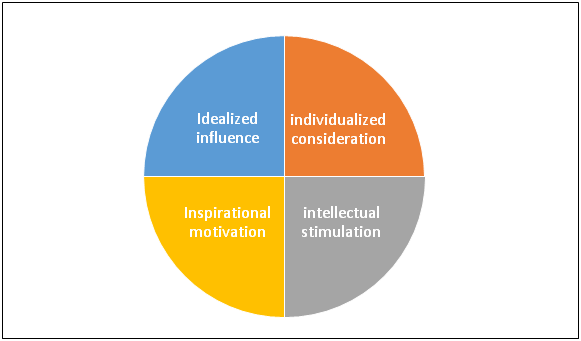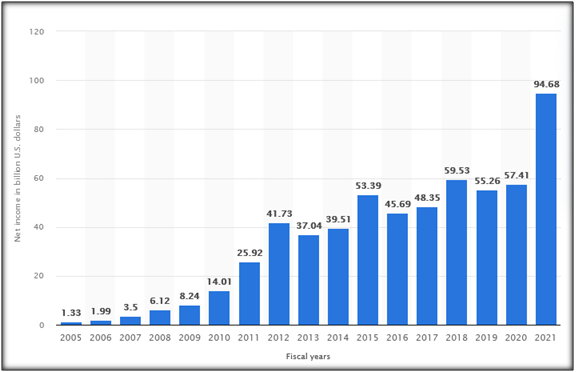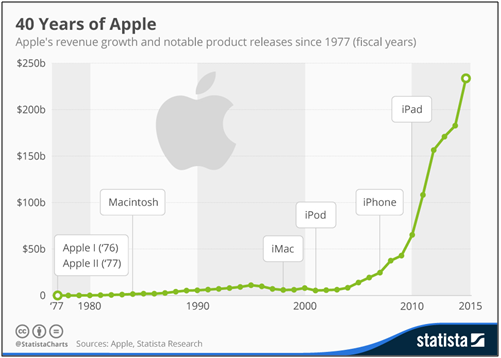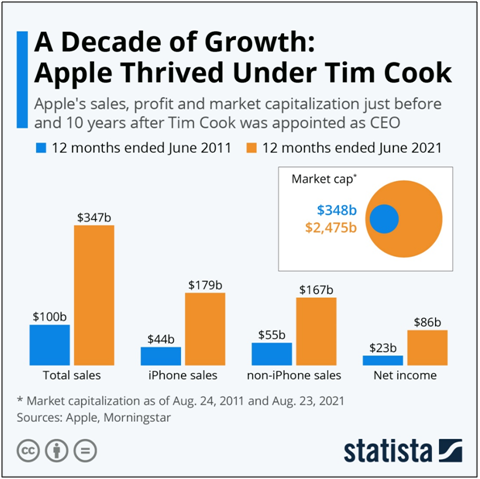Leadership Assignment: Transformational Management at Apple
Question
Task:
Write a report on leadership assignment on the impact of the current post-pandemic situation on Management and Leadership in a specific organization.
o Choose a company or organization and investigate how their Management and Leadership styles have changed over the course of the pandemic, and what new skills Managers and Leaders need to be successful in the post pandemic world.
§ First select an organization and describe it, including business name, sector, and company size as a minimum and justify your selection
§ Analyze the leadership styles that were prevalent in the organization prior to the pandemic, and identify any changes that occurred over the last 18 months, taking into consideration process and people management aspects (you may make assumptions, providing theoretically sound rationale)
§ Advise which personal decision style is recommendable in the current situation. Make a suggestion based on your views and provide theoretically sound rationale for your decision
§ Reflect on the impact of the digital age on required management skills
Answer
Introduction/ Background
With the outbreak of the COVID-19 pandemic across various countries in the world, there have been ongoing changes in both leadership and management approaches for responding to the challenges. The purpose of the leadership assignment here is to analyse the changes in leadership and management approaches undertaken in an organization in this post-pandemic situation. For this purpose, Apple Inc has been chosen as the case study organization. This organization has been selected because it is present in many countries worldwide and has experienced consequences of the pandemic in those regions. Thus, analysing the impact that it has faced in these countrieswould be helpful to understand the change in its leadership approach alongside ample information present about the same.
Apple Inc is a technology company established in 1977 for designing, manufacturing and marketing personal computers, mobile communication devices and others (Bloomberg, 2021). It provides a wide range of services, sells related software, peripherals and networking solutions. Apple sells 1.65 billion active devices and products all over the world through retail stores, online stores, direct sales force, resellers, third party sellers and wholesalers (Selleck, 2021). In addition, the brand operates in the tech hardware and semiconductors industry and comprises of 154,000 employees.
Past Leadership Style in Apple
Various scholars have pointed out the presence of transformational leadership qualities in the personality of Steve Jobs who was the co-founder of Apple Inc. This leadership approach goes beyond using rewards for satisfying current needs of the employees and further focuses on moving the followers towards their career growth and advancement (Steinwartand Ziegler, 2014). In this regard, three aspects of transformational leadership evident in Job’s approach were creativity, vision and passion. He had the tenacity and determination to see through things in the market, which made him one of the examples of transformational leaders (Steinwartand Ziegler, 2014). Furthermore, he also displayed several characteristics of transformational leadership that enabled him to build an enduring company like Apple. This shows that this leadership approach was prevalent in the company. Jobs approach was to focus on priorities and filtering out distractions for dealing with persisting issues in the organization (Isaacson, 2012). Another management style adopted in this company was simplicity by zeroing down to essence and eliminating any unnecessary components. This has been evident in the product designs of Apple enabling customers to use them without any hassle. Integration and coordination amongst hardware, software and peripheral devices alongside all the departments across the entire organization has been another focus of the leadership approach (Isaacson, 2012). This has helped all the members in being responsible and accountable for their work end to end.
Fig 1: Transformational Leadership

(Source: Author)
The leadership approach of Apple also emphasized more on products instead of profits that helped it to build a loyal and strong customer base in the market. This approach prevalent in the company before can also be categorized intro three discrete processes, namely, strategic visioning, overcoming internal struggle and sustaining change momentum (Yu, 2013). Strategic visioning has been part of Apple’s leadership approach for modifying and innovating products based on the industry trends and satisfying customer demands. These products, services and designs undertaken in the company are tailored for meeting specific customer needs (Yu, 2013). Internal resistance within the organization is constantly reduced by carrying out overbearing and top-down interventions. Obstacles that might delay or hamper progress or learning are handled beforehand in this approach (Yu, 2013). Lastly, changes have been introduced as and when required through proper interventions and before reinforcing desired behaviour in employees.Jobs undertook the approach of choosing partners with same goals but diverse perspectives, complementary skills and workstyles required for continued innovation in an organization (Hunter, et al., 2012). Both distant charisma and close friend aspects have been present in this leadership approach by displaying both distance and closeness as leaders. Such approach helped in motivating and encouraging employees alongside creating a collaborative work culture (Razinand Kark, 2012). Thus, this indicates that Jobs used to serve as the visionary leader and driving force in the company that led to its successful rise as an innovative powerhouse.
Fig 2: Apple's net income 2005-2021

(Source: Vailsher, 2021)
However, the leadership approach of Jobs has also been criticized for being too focussed on perfection, tolerating only “A” players and relying only on face-to-face communications (Isaacson, 2012).Besides, he also lacked the characteristics of empowering and interactive present in a transformational leader, which have been criticized by various scholars. This is because he often became too demanding for the employees that put excessive pressure on them and this trait cannot be regarded as that of a transformational leader (Steinwartand Ziegler, 2014). His leadership has also been criticized for short temperament, verbal abusing and threatening of employees and friends. The fact that Jobs was uncomfortable in social situations affected his interpersonal relationships with employees and used excessive control over them, which contradicts true aspects of being a transformational leader (Krapfland Kruja, 2015). Despite these characteristics, an effective, collaborative and enthusiastic work culture has been prevalent in Apple that led to the company’s success.
Changes in Leadership Approach
Three leadership characteristics have always been evident in the approach of Apple’s leaders and management. These include deep expertise, immersion and collaboration (Podolnyand Hansen, 2020). Deep expertise enables the leaders in meaningfully engaging various work done within different individual functions and departments; immersion is ensured in the details of those functions and willingness to collaborate is also must for collective decision-making. These three fundamentals have been present pre and post-pandemic situation as well enabling managers to respond to external challenges more effectively (Podolnyand Hansen, 2020). This leadership approach has been helping Apple in operating as the most innovative brand in the market by devising solutions for both customers and handling challenges.
Fig 3: 40 Years of Apple

(Source:Richter, 2016)
Furthermore, the leadership in Apple in response to the pandemic displays bold decision-making aiming for speed and concern about its employees and customers. The company continued to pay hourly workers and changing its leave policy for health issues related to the pandemic to empathize with the needs and concerns of the employees (Renjen, 2020). It further stayed connected and displayed concerns for the customers and local communities and reduced possible shocks to the supply chain. The leadership approach also focused on continuing its operations online by maintaining a digital presence for serving the customers and kept its business engaged in the ecosystem through different channels (Renjen, 2020). This shows that the leaders and managers of the brand not only focused on undertaking quick and effective decisions but also emphasized on reducing any harmful impact on its stakeholders. Besides, Tim Cook has also been demonstrating cautious, collaborative and tactical leadership by undertaking strategies to handle the aftermath of the pandemic (Peterson, 2020). He arranges meetings for discussing about the brand’s actions and progress in the coming months and expects participation of all employees and members in achieving the goals. Employees work here in a more relaxed environment that has enabled them to better respond to the negative consequences brought in by the pandemic (Peterson, 2020). The approach also focuses on prioritizing important areas during challenging times for undertaking suitable strategies or actions. Thus, this new leadership style has helped in reshaping the ways in which staff work and think with the outbreak of the pandemic. Tim Cook has also been undertaking different initiatives other remote work for ensuring a more effective leadership post-pandemic (Lopez, 2020). Under his leadership, Apple has created the Racial Equity and Justice Initiative. Around $100 million was announced for challenging systematic barriers limiting the opportunities for these minority people and groups (Lopez, 2020). Such barriers have been addressed in areas of criminal justice, education and economic equality. This shows that the company’s leadership approach has now shifted towards protecting its employees especially minority individuals who were some of the most vulnerable sections during the pandemic.
Fig 4: A Decade of Growth: Apple Thrived Under Tim Cook

(Source: Richter, 2021)
Tim Cook has also been instilling confidence in the organizational members for keeping them motivated and encouraged during the difficult times. During the pandemic, he made sure to ensure employees how the company can emerge strongly from the crisis by providing a vision to them. In this regard, various actions or strategies were identified as effective ones for dealing with the consequences of the pandemic. These include continuing investments, managing businesses wisely, making decisions collaboratively and taking care of the teams and their work. It has been possible to stay afloat despite significant external challenges because the leadership approach in Apple has been focused on long-term development instead of short-term adjustments.Besides, flexibility in working conditions alongside focusing on the health of the employees have also been undertaken more seriously with the pandemic outbreak. Thus, the leadership changed from focussing only on perfection and innovation to long-term sustainability and concern for employees in the past few months.
Recommended Personal Decision Style
There are various decision-making styles that can be undertaken in the organization for effectively handling the challenges. The most appropriate style for Apple will be conceptual style. This style focused on the bigger picture for taking risks to ensure long-term growth and development. The leadership style prevalent in Apple currently focuses on such long-term instead of short-term adjustments, which will make this conceptual style suitable for the company. In this regard, different options and possibilities should be evaluated having a higher tolerance for ambiguity. These decisions would come from analysing the possible consequences if the selected decisions are undertaken. Thus, long-term decision-making is effective under this style. Furthermore, during these uncertain times, both leaders and mangers must focus on acting honestly, urgently and in an iterative fashion by accepting that mistakes are inevitable (Kerrisseyand Edmondson, 2020). This would help them to undertake the right course of action and dealing with the challenges in the market. Leaders in a novel crisis can depend on four lessons while depending on their conceptual decision-making style. They should act with urgency instead of waiting for more information and clarity. The leaders should always communicate the bad news to all organizational members with transparency without creating anxiety or uncertainty (Kerrisseyand Edmondson, 2020). They should further respond productively to any missteps undertaken instead of fearing to act. Lastly, they should constantly engage in updating all stakeholders about problems.
Fig 5: Four decision-making styles

(Source: Author)
Furthermore, various specific actions should also be undertaken by the leaders in uncertain times like the pandemic. They should clearly set out a list of priorities for better responding to the external challenges (Mesaglio, 2020). This would enable the organization in making quick and effective decisions. The leaders should undertake a nonbinary approach towards solving the problems that would enable them to look at the bigger picture instead of focusing only on objective points (Mesaglio, 2020). They should become more honest, empathetic, clear and simple in their approach towards leading and guiding the organizational members through proper communication and transparency. Leaders can also collect stories of teams who are coming together for solving the problems in a collaborative manner for motivating employees. Besides, they must also enhance their capability of making good and fast decisions. In this regard, they can follow principles like being more counterintuitive, involving more people, making critical small choices and empowering others with judgment and character (Alexander,Smetand Weiss, 2020). Thus, all these strategies would lead to effective personal decision-making.
Reflection on Impact of Digital Age
With the rapid growth in technological advancements and digitalization, there are occurring various changes in the managerial skills required in the organization. In an increasingly digitized business environment, executives leading organizations and employees working need to upgrade their skills and expertise for succeeding. It can be said that they should at first gain technical skills for understanding digitization and implementing the digital tools and technologies in the companies. They should also focus on leading changes through effective communication and interpersonal skills that would be required in dealing with resistance from the employees. In this regard, three types of basic skills like technical skills, human skills and conceptual skills are required in the managers and leaders. These skills are essential that would enable them to perform the core activities of project management, personnel supervision and strategic planning in the digital age. Various other skills required for managers in the digital age are communication, subject-specific knowledge, self-reflection, self-organization, empathy, open mindedness, patience and creativity. Thus, these skills both hard and soft are essential for gaining more managerial skills for digitalization.
Conclusion
The report focused on analysing the change in leadership and management approach post-pandemic by taking the example of Apple Inc. For this purpose, at first the background of company’s information was provided including its products, services, size and operations. The next section of the report focused extensively on analysing the past leadership styles present in Apple by taking the example of Steve Jobs. It was found that three aspects of vision, creativity and passion were present in the transformational leadership of Jobs while interactive and empowerment were absent. Here, both positive and negative aspects of his leadership approach were demonstrated. The third section focused on understanding the changes occurring in the leadership style of Apple post-pandemic. It now emphasized more on long-term growth and employees instead of perfection and innovation. The third section provided suitable recommendations for undertaking an effective personal decision-making style. Lastly, further reflection about the impact of digitalization on managerial skills was provided.
Reference List
Alexander, A.,Smet, A.D. and Weiss, L., 2020. Decision making in uncertain times. [online] McKinsey & Company. Available at:
Bloomberg, 2021.Apple Inc. [online] Available at:
Hunter, S.T., Cushenbery, L., Fairchild, J. and Boatman, J., 2012. Partnerships in leading for innovation: A dyadic model of collective leadership. Industrial and Organizational Psychology, 5(4), pp.424-428.
Isaacson, W., 2012. The real leadership lessons of Steve Jobs. Harvard business review, 90(4), pp.92-102.
Kerrissey, M.J. and Edmondson, A.C., 2020. What Good Leadership Looks Like During This Pandemic. [online] Harvard Business Review. Available at:
Lopez, M., 2020.Leadership In A Post-Pandemic World Requires More Than Supporting Remote Work. [online] Forbes. Available at:
Mesaglio, M., 2020.4 Actions to Be a Strong Leader During COVID-19 Disruption. [online] Gartner. Available at:
Podolny, J.M. and Hansen, M.T., 2020. How Apple Is Organized for Innovation. Harvard Business Review Nov.-Dec, pp.86-95.
Razin, M.A. and Kark, R., 2012. The apple does not fall far from the tree: Steve Jobs’s leadership as simultaneously distant and close.Leadership assignment In Exploring Distance in Leader-Follower Relationships (pp. 261-293).Routledge.
Renjen, P., 2020. The heart of resilient leadership: Responding to COVID-19. [online] Deloitte. Available at:
Steinwart, M.C. and Ziegler, J.A., 2014. Remembering Apple CEO Steve Jobs as a" Transformational Leader": Implications for Pedagogy.Journal of Leadership Education, 13(2).
Yu, H.H., 2013. Decoding Leadership: How Steve Jobs Transformed Apple to Spearhead a Technological Informal Economy.Journal of Business & Management, 19(1).
Vailsher, L.S., 2021. Apple's net income 2005-2021.[online] Statista. Available at:
Richter, F., 2016. 40 Years of Apple. [online] Statista. Available at:
Richter, F., 2021. A Decade of Growth: Apple Thrived Under Tim Cook. [online] Statista. Available at:












